A Study in Enchantment: Once Upon a Time with Beatrix Potter
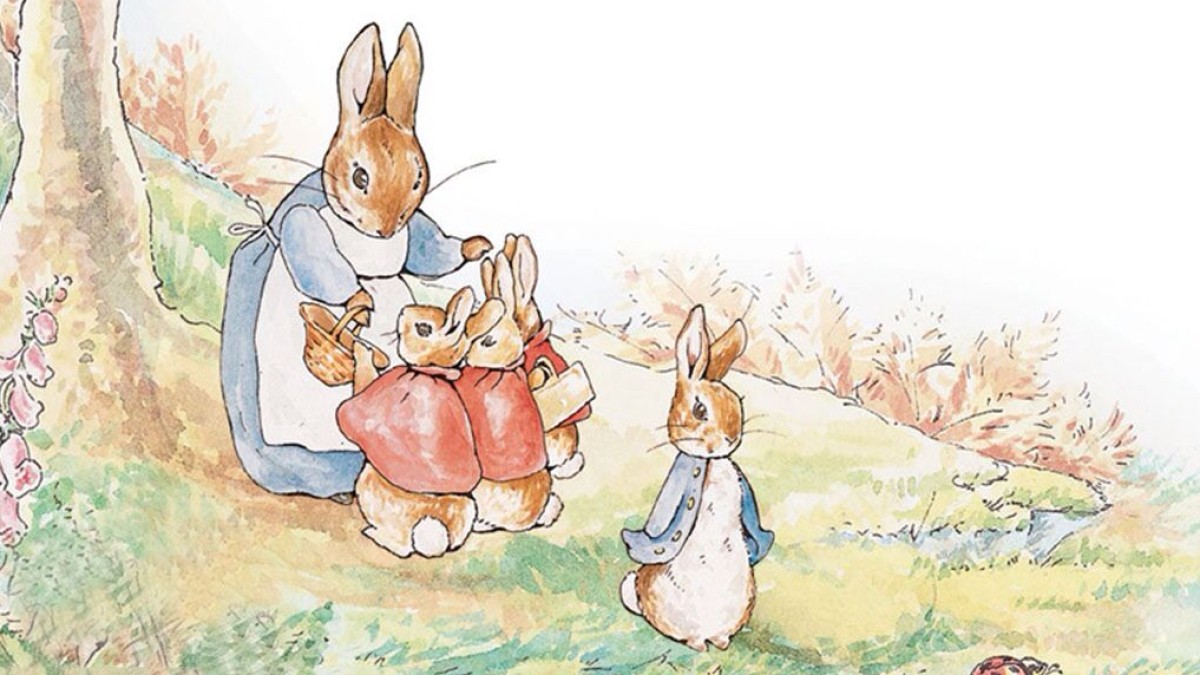
A Study In Enchantment Vol. 1 - A Birthday Tribute to Beatrix Potter 28th July (1866–1943)
Dear Enchanted One,
Once upon a time, there was a girl who listened to the countryside as if it were a storybook. Who wandered fields and footpaths with a sketchbook under her arm, who gave voice and character to the woodland creatures she so tenderly observed. That girl became one of the most beloved storytellers of all time: Miss Beatrix Potter.
To honour her birthday, let us wander into the mossy, magical world she conjured: one that still shimmers in the pages of her tales and the valleys of the Lake District she called home. A world of quiet courage, of earthy beauty, of hedgehogs in bonnets and the great miracle of creative solitude!
This is both an enchanted introduction to her work and a heartfelt invitation to join us, in June 2026, for Take Me To The Lakes, where Beatrix’s spirit rustles in every hedgerow.
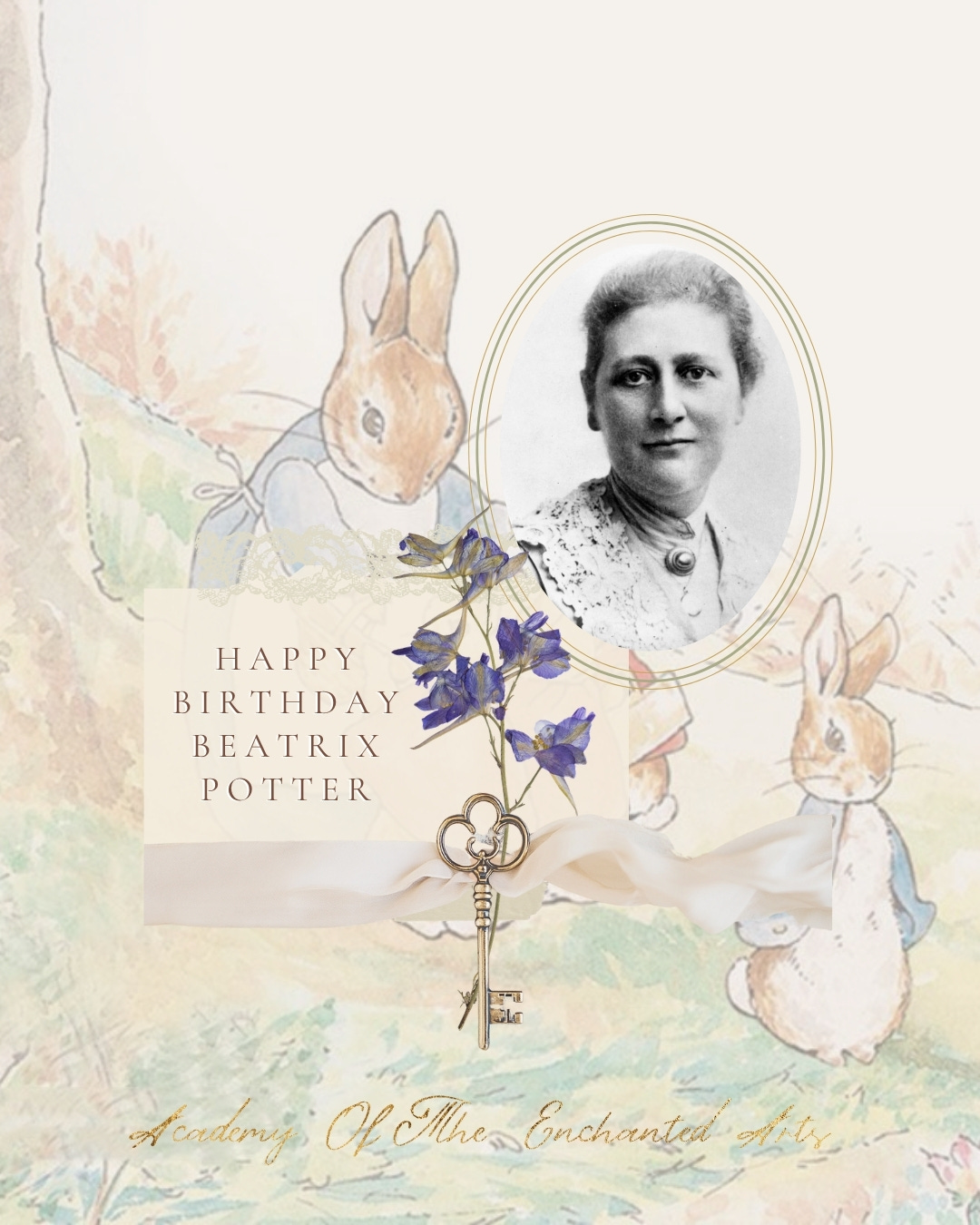
The Land as Muse
Before she was an author, Beatrix was a naturalist and an observer of mushrooms, wildflowers, animal habits and the quiet rituals of the land. Her stories weren’t just charming; they were true, in the oldest way. They held the pulse of the Earth.
Long before her name appeared in gilt upon the spine of a little book, she was sketching fungi with scientific precision, collecting specimens, and submitting papers to the Linnean Society (under a man’s name, for they would not hear a woman’s voice). Her eye was that of a reverent seeker (meticulous, enchanted) and she saw the land not as scenery but as kin.
As a child, Beatrix Potter spent long holidays in the Lake District, keeping illustrated journals filled with drawings of woodland creatures and pressed petals. It was there, amidst the hedgerows and stone walls, that her inner world began to entwine with the outer one — the boundary between story and soil softening like moss after rain.
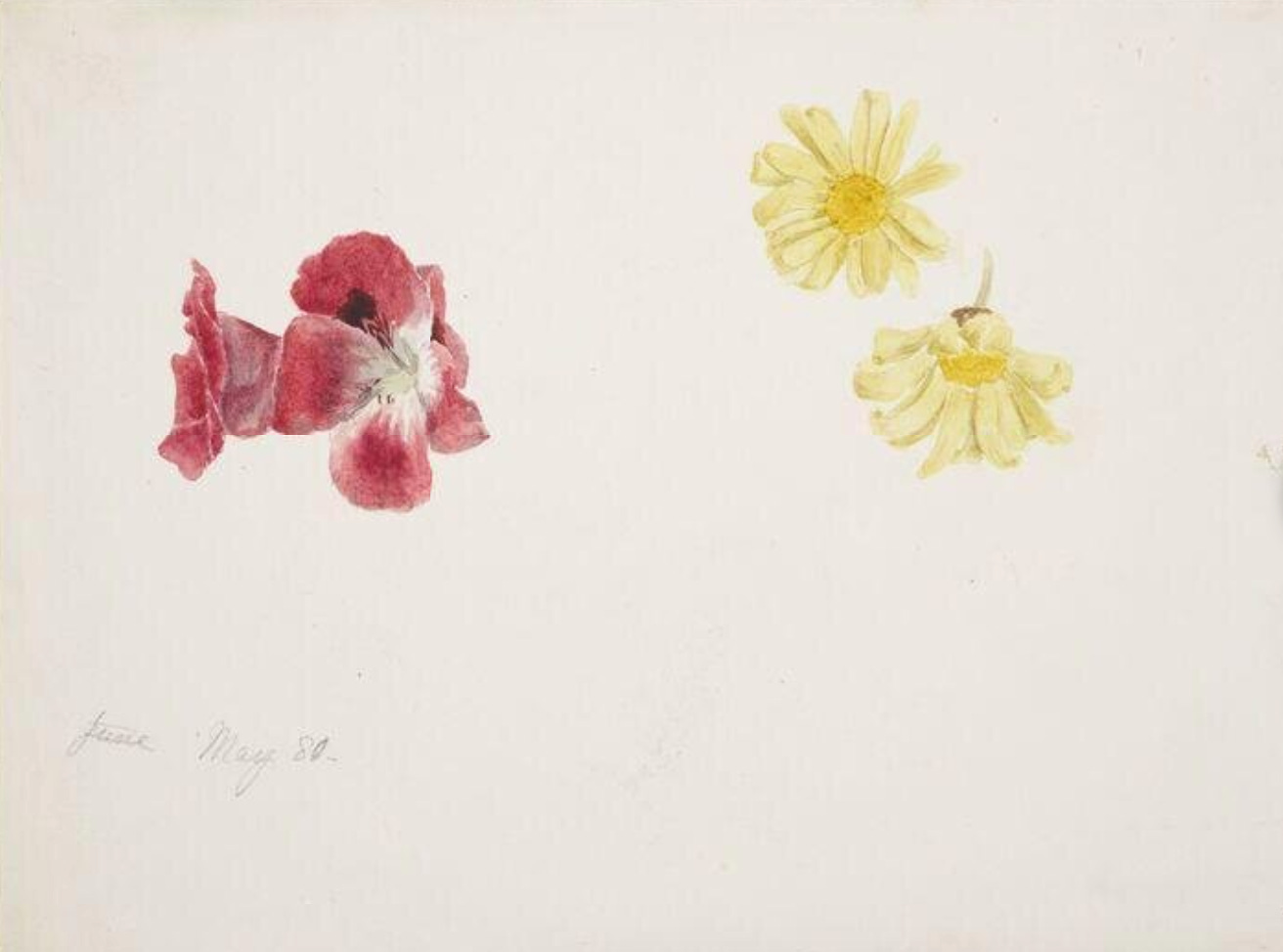
Image source: Red petunia and yellow daisy, by Beatrix Potter, dated May 1880, watercolour and pencil on paper. Museum no. Linder Bequest BP.276. © Victoria & Albert Museum, London, courtesy Frederick Warne & Co Ltd (link here)
At Take Me To The Lakes, we walk her paths. Her home, Hill Top, is still dressed in the colours of her tales: the green paint on the front door, the tiny writing desk, the climbing roses, the vegetable garden where Peter Rabbit still rustles among the lettuces. The air is heavy with the feeling of her presence; not as a ghost, but as a gardener, still tending, still telling.
It is a living museum of imagination and rural devotion. A sanctuary where the rhythms of the land and the realm of story live hand in paw.
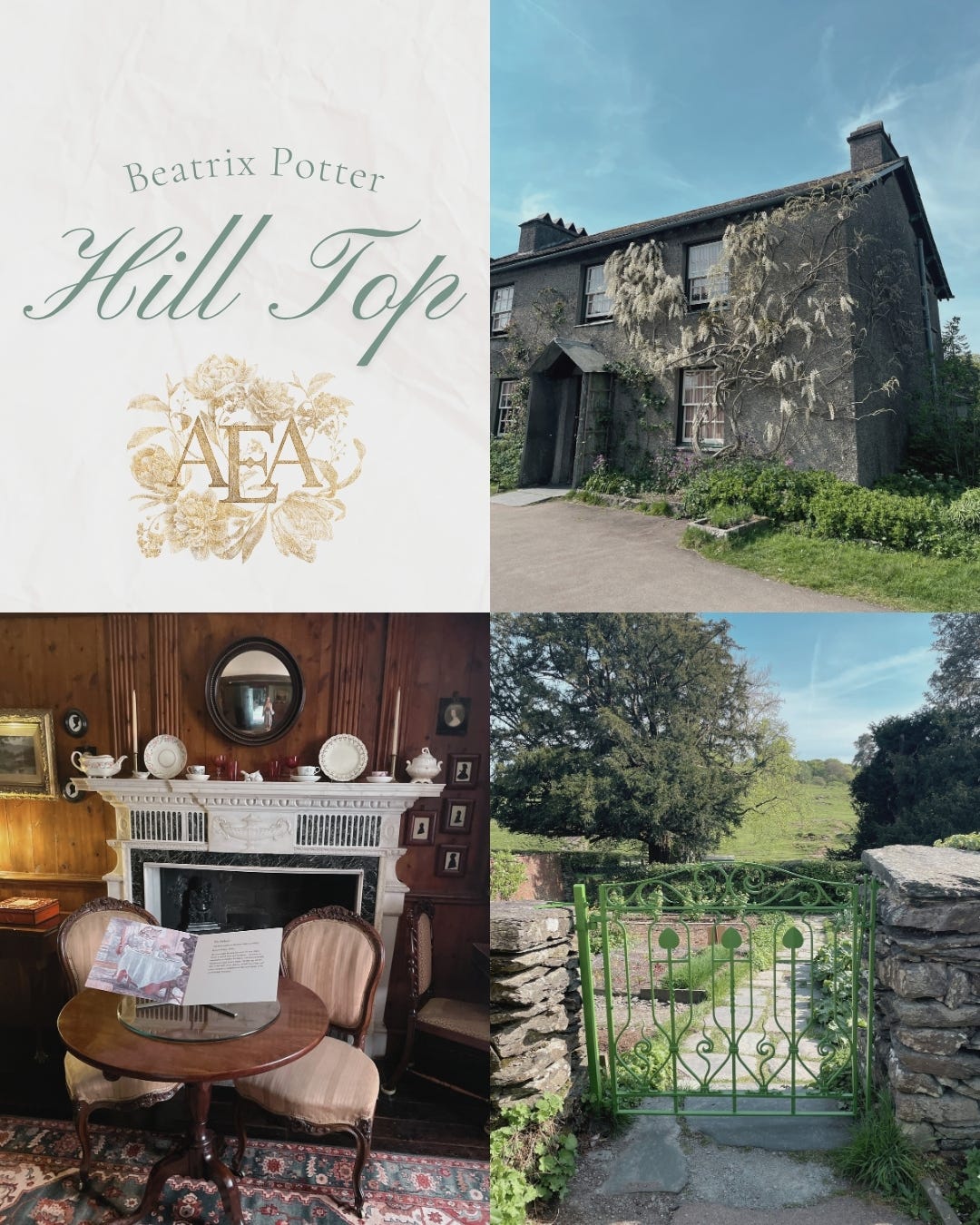
Tales of Whimsy and Wildness
In her delicate watercolours and softly mischievous stories, Beatrix gave not only personality, but purpose, to the creatures she so lovingly observed: rebellious rabbits, apron-clad hedgehogs, waistcoated frogs and whiskery mice! Yet beneath this quaint surface simmered a woman of fierce independence and scientific precision: a visionary who dared to enchant the everyday.
Her stories unfold in miniature worlds where wildness and domesticity hold hands. A world where a squirrel might wear a tailcoat, and a hedgehog might do the ironing! Here, danger and delight are often siblings: pies are nearly made of kittens, gardens are tiptoed through with dread, and rules are broken, often with glee. Beatrix’s brilliance lay in honouring both the gentleness and the grit of rural life. She wrote not just for children, but for the quiet soul in all of us who still believes in foxgloves, bluebells, and the possibility of talking to animals.
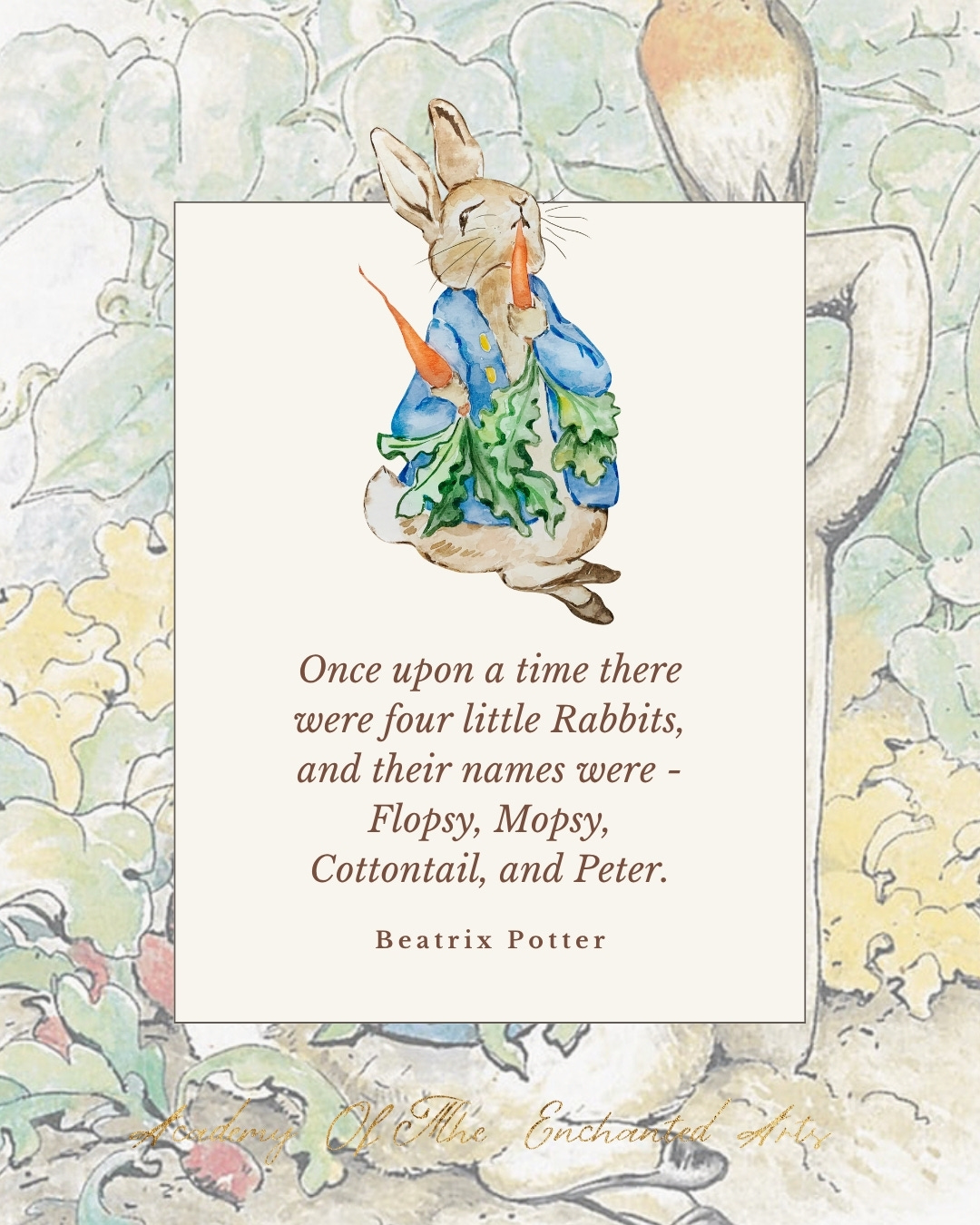
Her canon of tales reads like a nursery of British folklore, passed down from woodland to hearthside, etched in ink and rain:
- The Tale of Peter Rabbit (1902) — the impish icon himself, chased through Mr McGregor’s garden with a sprig of parsley and a beating heart.
- The Tale of Squirrel Nutkin (1903) — a fiery, riddle-speaking squirrel whose tale brims with rebellion.
- The Tailor of Gloucester (1903) — a Christmas fairytale of humble magic, kindness, and enchanted mice seamstresses.
- The Tale of Benjamin Bunny (1904) — Peter's cousin and co-conspirator in garden escapades.
- The Tale of Two Bad Mice (1904) — Tom Thumb and Hunca Munca, who cause adorable chaos in a doll’s house.
- The Tale of Mrs. Tiggy-Winkle (1905) — the beloved washerwoman hedgehog who presses linens with care.
- The Tale of the Pie and the Patty-Pan (1905) — a tale of etiquette, misunderstandings, and the dangers of unexpected pie fillings.
- The Tale of Mr. Jeremy Fisher (1906) — a frog of high civility and near-fatal fishing misadventures.
- The Story of a Fierce Bad Rabbit (1906) — a short and moral fable on stealing and comeuppance.
- The Tale of Tom Kitten (1907) — a misbehaving kitten whose tidy clothes won’t stay on for long.
- The Tale of Jemima Puddle-Duck (1908) — a naive duck and a sly fox, a cautionary tale disguised in softness.
- The Tale of Samuel Whiskers or The Roly-Poly Pudding (1908) — where poor Tom Kitten is nearly turned into a dish.
- The Tale of the Flopsy Bunnies (1909) — Peter’s grown-up sisters and their sleepy offspring face Farmer McGregor once more.
- The Tale of Ginger and Pickles (1909) — a charming fable about shopkeeping and economic lessons.
- The Tale of Mrs. Tittlemouse (1910) — a tidy woodmouse with a house full of unwelcome guests.
- The Tale of Timmy Tiptoes (1911) — another squirrel story, sweet but tinged with strangeness.
- The Tale of Mr. Tod (1912) — a darker tale of cunning foxes and protective badgers.
- The Tale of Pigling Bland (1913) — a pig’s journey to market and towards a love story.
- Appley Dapply’s Nursery Rhymes (1917) — verses with sketches of animals in their daily lives.
- The Tale of Johnny Town-Mouse (1918) — a country mouse and a city mouse, an age-old moral reimagined.
- Cecily Parsley’s Nursery Rhymes (1922) — rhymes and drawings, her last published book in the classic series.
Every creature she drew was both a character and an archetype who was brave, fussy, cheeky, orderly, or bold. In them, we see ourselves: in Peter’s disobedience, in Jemima’s trusting heart, in Mrs. Tittlemouse’s craving for peace and quiet. Her legacy is not just one of charm, but of deep, unshakable enchantment — the kind that lingers in hedgerows, that stirs in the ferns, that comes alive again when you say her name.
And at Take Me To The Lakes, we honour her not as a mere illustrator of animals, but as a mythmaker of the pastoral. Her world is stitched into the very soil of the Lake District, and we shall walk where her creatures once scurried and dreamt.
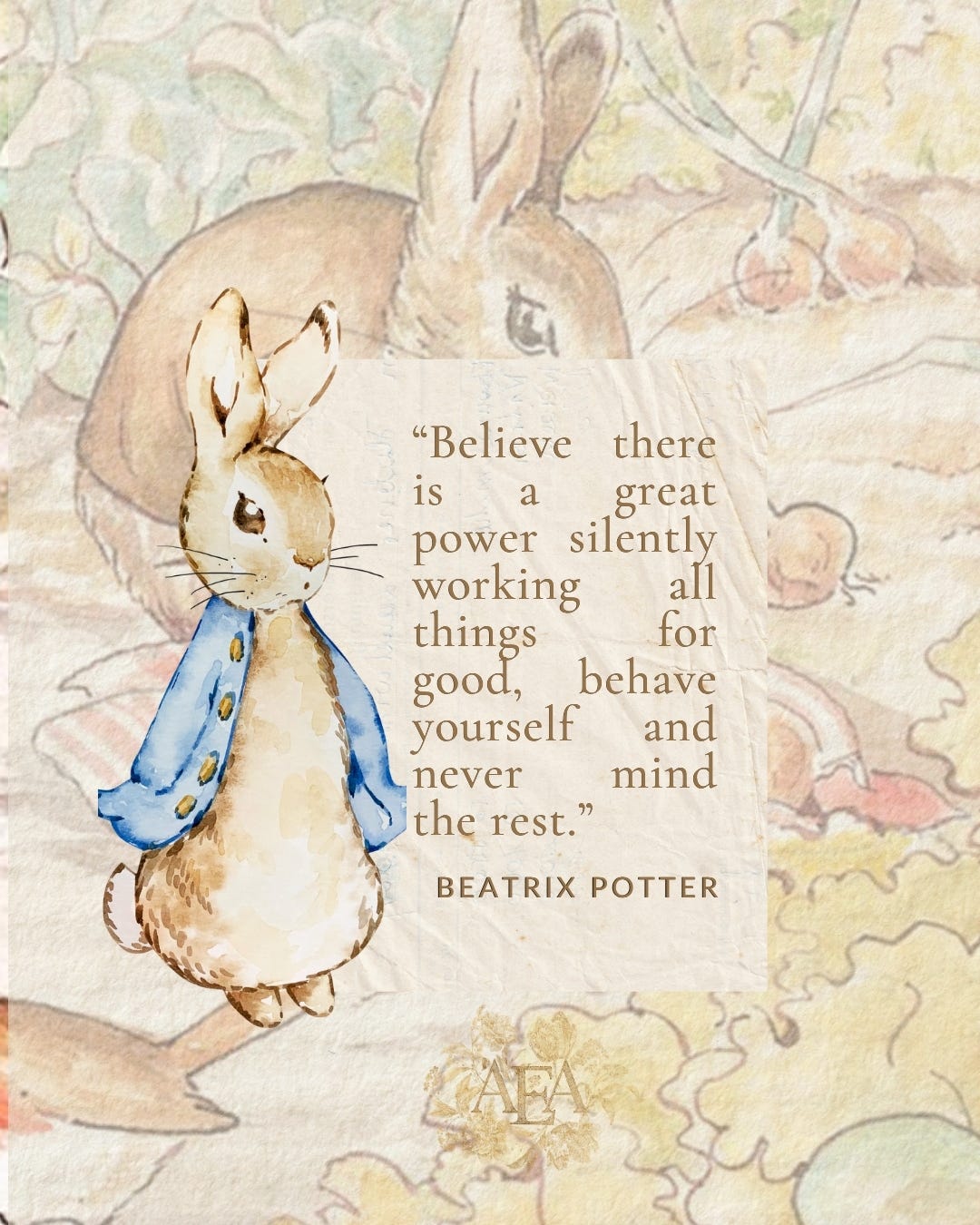
A Life of Quiet Revolution
Beatrix Potter was more than a beloved author, she was a quiet force of nature, a woman who lived not just in the world, but with it.
Born in 1866 to a wealthy but restrictive London household, she was expected to marry, embroider, and conform. But Beatrix listened not to society’s script she listened to mushrooms. To badgers. To wind. To the ancient dialect of trees and soil.
Before she was known for her stories, she was a pioneering mycologist where she was studying fungi under a microscope, sketching with scientific precision, and proposing theories that were later confirmed by modern science.
Yet, as a woman in Victorian England, Beatrix Potter’s scientific findings were dismissed and her name barred from professional journals. Still, she observed. Still, she painted. And still she learned to honour the sacred truth that lives in quiet study, slow looking, and patient reverence.
When her little books began to take off, the first being The Tale of Peter Rabbit, privately printed in 1901, she wisely retained the rights. This allowed her to maintain creative and financial control over her work, a rare thing for a woman of her era. She also designed the merchandise herself. Everything from the toys, the board games and even the fonts. In fact, Beatrix Potter became one of the first authors in history to license her characters.
With the money from her books, she then did something extraordinary: she bought land. Not to build upon, but to preserve.
In 1905, she purchased Hill Top Farm in Near Sawrey, and with it began a lifelong devotion to the Lake District’s pastoral beauty. Over the next four decades, she acquired over 4,000 acres of fell, forest, and farmland: not for herself, but for the future. Upon her death in 1943, she gifted it all to the National Trust. It was the largest bequest of land in their history up to that point.
She lived by the rhythm of the land: farming Herdwick sheep, tending to her garden and painting by the hearth. She wore sturdy shoes and thick woollen skirts, and she found peace in solitude and freedom in the rural life.
Beatrix Potter is a story of quiet rebellion. Of gentle courage, of an enchanted soul who resisted the narrow paths laid before her, and instead made her own, winding, earthen, joyful, and shared it with the world through stories that still stir hearts a century on.
At Take Me To The Lakes, we honour Beatrix not just as a writer, but as a woman who lived enchantment as a daily practice. As something not airy or abstract, but grounded, rooted and real. Her life whispers to every soul who longs to leave behind the noise, to reclaim the slow, wild, wondrous life they were always meant to live.
Further Study & Soft Delights
A gentle companion syllabus for Beatrix Potter lovers
Watch
– Miss Potter (2006, starring Renée Zellweger)
– Beatrix Potter with Patricia Routledge (BBC documentary)
– Peter Rabbit and Me (Beatrix Potter documentary with Penelope Wilton)
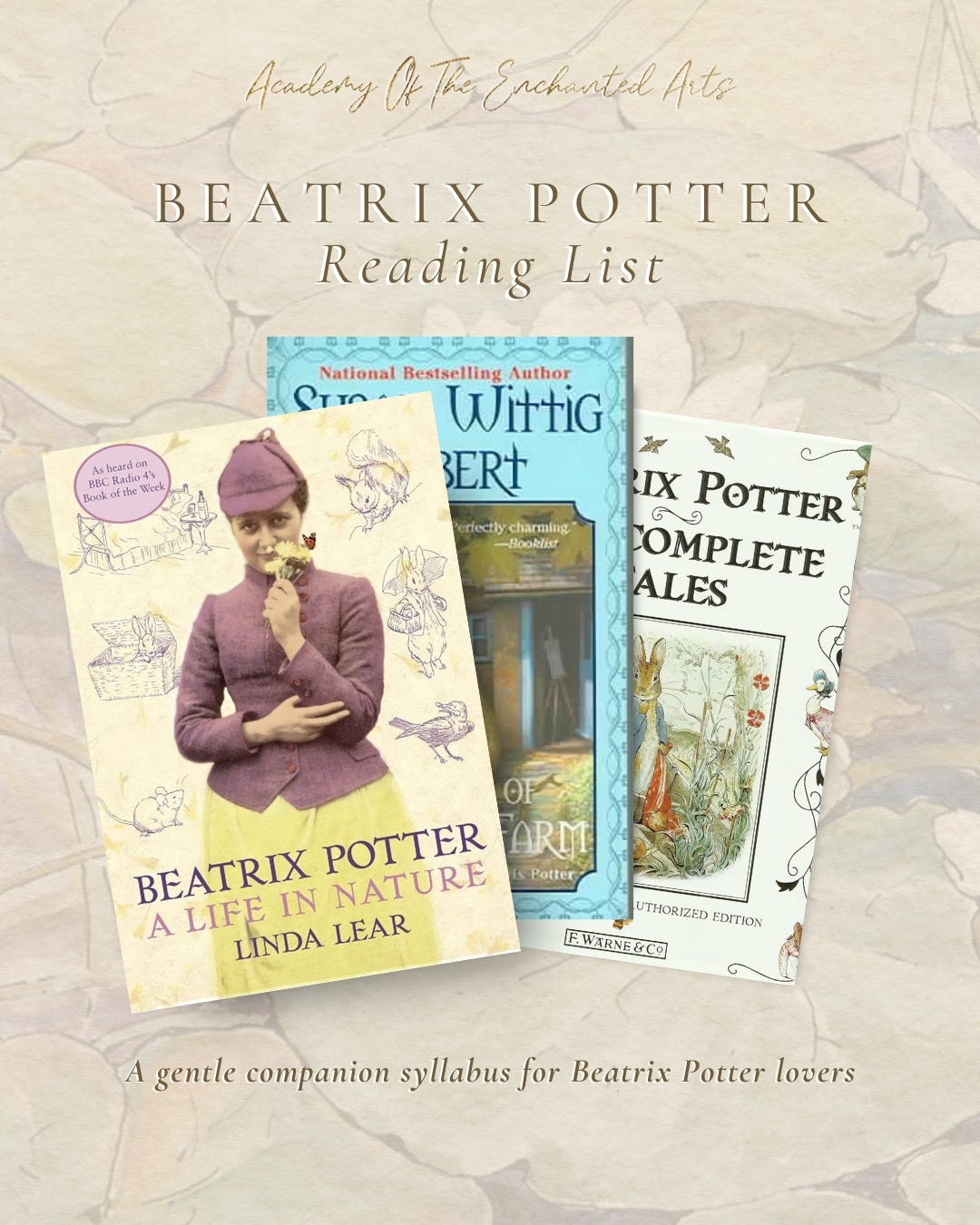
Read
– Beatrix Potter: A Life in Nature by Linda Lear
– The Tale of Hill Top Farm by Susan Wittig Albert (a whimsical fictional mystery inspired by her life)
– Her original tales — begin, perhaps, with The Tale of Benjamin Bunny or The Tale of Mrs. Tiggy-Winkle
Visit
– Hill Top, her 17th-century farmhouse in Near Sawrey
– The Armitt Museum, where many of her scientific drawings and diaries are kept
– The Beatrix Potter Gallery in Hawkshead
(All included or optional during the Take Me To The Lakes retreat, June 2026)
Re-Visiting Beatrix Potters Steps At Take Me To The Lakes
To follow Beatrix Potter is to return to the Earth to know a field by name, to paint a petal with reverence and to honour the old stories that rustle in the hedgerows.
She teaches us that enchantment is not distant or elusive and rather that it is as close as a mushroom ring or a rabbit’s footstep, as quiet as a page turning and as near as our own hand, holding a brush, a pen, a garden trowel.
This is the spirit that sings through Take Me To The Lakes: my slow-travel, soul-led arts retreat to the Lake District, where her beloved hills cradle us in soft green arms. Next June 2026, we will walk the same winding paths, visit her land, speak her name, and study her legacy as both artist and activist. There will be readings and lectures, sketching under trees, and tea poured amongst wildflowers. We will make, marvel, and meander: together.
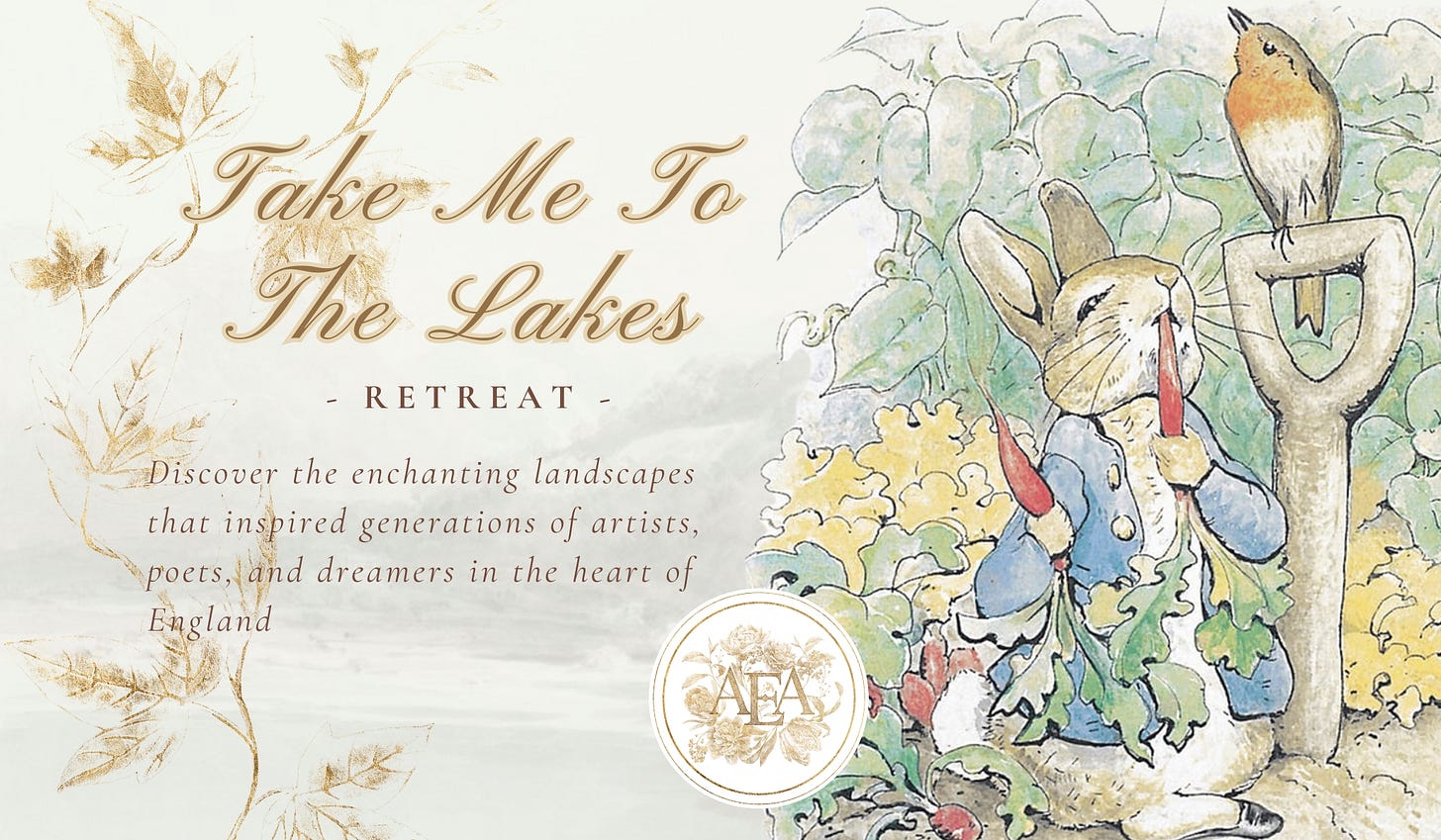
Click here to explore Take Me To The Lakes
So come with us, enchanted one, into the heart of her countryside, and the heart of your own creativity.
But until then, take a tale, take a breath, take a soft hour to dream among the creatures of Beatrix Potter’s world.
With love and enchantment,
Georgie xoxo
Categories: : A Study In Enchantment
 Georgie
Georgie 